After yesterday's road blocks we decided to get up early and allow plenty of time for a taxi to divert its way around any potential problems in order to get our 7.30am bus to Cuzco. Hence, we were dressed and ready to go at 6.30am only to be greeted by the man in the hostal reception cheerily telling us that he’d rung the bus company and they’d delayed the departure time until 9.00am because of the demonstrations and road blocks.
These, he assured us, were scheduled to finish at 9.00am and he suggested we go upstairs and have breakfast and leave later for the bus. We panicked a little, worried that the bus may leave without us, but when we got upstairs and watched the passing straggly groups of demonstrators shouting and smashing glass bottles in the street, aiming them towards the few cars that we’re daring to pass through, we decided that perhaps we were safer staying put for a while.
Every now and then it seemed to die down but then another group would appear from a different direction. At about 8am we decided we really needed to make our way to the bus station, called a taxi and got there safe and sound, with only a few detours around boulders in the road. Our bus eventually got going around 10.00am but a few hundred yards down the road had to reverse up and try a different route as the road was covered in a wide swathe of broken glass. We then took a secondary route out of town but soon joined a line of lorries, buses and cars at a standstill because the road was blocked by a demonstration.
Fortunately we had decided to take a bus that stopped at various Inkan sites en-route so we had a guide, which in normal circumstances we don’t have when travelling between cities. He earnt his money this time, keeping us up to date with the day’s events and action! He explained that the protests were over a hydro-electric project that is, at present, just a project. There is no hydro-electric dam in progress but the local elections are approaching and the politicians are stirring up local emotions.There were groups coming into town from Juliaca, to the north of Puno, to join the local protests and they were coming downhill towards the junction we were trying to get through. He also said that the protestors tend to get rather worked up and angry and it was better to stay behind them, in the bus, rather than try to get through and aggravate things more. Eventually, about an hour later, they had all gone through and we were able to continue (start!) our journey. There were lots of rocks and boulders in the road as we made our way out of town but we zig-zagged our way through and headed off!
Our first stop was in Pukara, where we visited a small museum dedicated to Inkan history, where we had a whistle-stop tour and potted history of the local Inkan sites. The main feature here seems to be innumerable statues of a god holding a head in his hands. Maybe a war trophy, maybe cannibalism. Who knows? Unfortunately, as in many of the museums here, we weren’t allowed to take photos and there were too many people around to manage it surreptitiously!
At La Raya, the point where the Occidental range of the Andes converges with the Oriental range, we stopped for a quick photo shot and were once again besiged by locals who wanted to sell us rugs, socks, blankets, ponchos etc. Either that or, for the price of one Sol, you could have a photo of the local woman with her llama tied to a concrete post at the side of the road We fought our way through, got our photos of the snow-capped mountains and went on our way.
Our next stop was in a small village called Raqchi. Here there are the remains of a huge Inkan temple reputed to have been built to appease the god Viracocha after he had caused a nearby volcano to spew out fiery boulders in a fit of rage. The centrall wall of the temple reamins, now capped with roof tiles to prevent further erosion of the adobe walls.
The temple site is surrounded by dwellings, storage houses etc and an enclosing wall high up on the hillside to keep out the enemies (which of course wasn’t entirely successful when the Spanish arrived!)Back in the main square of the present-day village, we fought our way through the usual gang of locals selling knitted llamas, woolly jumpers, panpipes etc and continued on our way.
What does strike us as we meet young local, well-educated guides here is the strong ties to their roots. Despite their modern lives, there is still an underlying belief in the traditions and ancestors. Interwoven with catholicism brought in by the Spaniards, this can create what may seem to the westerner some very strange practices and beliefs.
Unfortunately we didn’t manage the last scheduled stop. We should have visited an old church with an elaborately painted interior but due to our rather late departure from Puno, this was closed by the time we got there. We arrived in Cuzco only about 3 hours late, but on the outskirts we then got stopped by the police, who hauled the driver in for having a defective headlight! We could see him gesturing that he had a bus-load of tourists to deliver (well, 11 of us on a mostly-empty coach) but they took him off, presumably to get a bribe out of him, and eventually let him continue (still without headlight) to our destination. We arrived in the dark on the side of the road somewhere in Cuzco, not in the bus station as we expected, so just grabbed a taxi, gave him the address of the hostal and thought we were nearly there.
We drove into the Plaza de Armas, the main square, knowing that our hostal was only two blocks from there. It was quite a surprise when he drove through a narrow arch, did a right-angle bend and went up a very steep hill not much wider than the car itself. However, a few yards before the hostal the driver seemed as surprised as we were to have our way blocked completely by a huge amount of earth and stones, the result of recent landslides which have affected many parts of Cuzco. Over the next few days were realised the extent of these landslides.
The town is built on steep hillsides and the view from our hostel reveals huge sheets of blue plastic all over town. These cover areas where the land has slipped. The local council have shored up the remaining land and covered it to try and prevent further rain washing more away. Many houses are left balancing precariously on the edge of the remaining land and others have fallen completely, leaving many people homeless. The government have provided each of these families with a blue tent and in various places you see rows of these tents.. It doesn't look much, but many of these people didn't have much in the first place. Nevertheless, your home is your home and it must be devastating to lose it.
Cuzco itself is a beautiful old town, with many historic colonial buildings and, of course, lots of churches, galleries and museums. One of the amazing things is that there are so many buildings built on and around Inkan walls.
There are loads of old narrow cobbled streets, hoards of touts selling tours and innumerable shoe-shine boys. Most of all, the favoured way for locals in this area to make money is to go out in traditional costume with a llama, lamb, kitten or small child, also dressed up, and persude tourists to pay a Sol for a photo. A woman and llama out at the ruins in the wilds of the mountains doesn’t seem too out of place, but here in the town centre it’s not so convincing!
Cuzco is normally the jumping-off point for visits to Machu Picchu, which is still inaccessible at the moment due to the floods earlier in the year which washed away the railway line and road between here and Aguas Clientes, the nearest village to the site. Predictions are that it will re-open as planned at the beginning of April, but in the meantime it is having a drastic affect on the tourist trade in Cuzco as many people have cancelled trips. It's making life difficult for the huge number of people who depend on tourists for their livelihood, and it's a shame as there's so much more to see in Peru besides the big site that everyone knows about.
And if you don't go to Cuzco you don't find Intari, the bar that doesn’t sell any beer at all. Instead it specialises in 'Alma de 20 Plantas’ (the spirit of 20 plants), an interesting and very more-some drink served up in a guinea-pig shaped jug. Just what you need on a rainy Cuzco evening after the journey that we had from Puno!
Road blocks, demos and a scenic journey to Cusco
Saturday, March 06, 2010
 Cusco, Cusco, Peru
Cusco, Cusco, Peru
Other Entries
-
72Following the Train To The Clouds
Dec 2967 days prior San Antonio de los Cobres, Argentinaphoto_camera81videocam 0comment 0
San Antonio de los Cobres, Argentinaphoto_camera81videocam 0comment 0 -
73Cafayate; days of wine, icecream and waterways
Jan 0263 days prior Cafayate, Argentinaphoto_camera42videocam 0comment 3
Cafayate, Argentinaphoto_camera42videocam 0comment 3 -
74Tucumán; chilling out and getting heated!
Jan 0560 days prior San Miguel de Tucumán, Argentinaphoto_camera26videocam 0comment 1
San Miguel de Tucumán, Argentinaphoto_camera26videocam 0comment 1 -
75Like Birmingham but better!
Jan 1055 days prior Córdoba, Argentinaphoto_camera64videocam 0comment 2
Córdoba, Argentinaphoto_camera64videocam 0comment 2 -
76Wines, Bikes, Barnsley and Bernard O'Higgins
Jan 1649 days prior Mendoza, Argentinaphoto_camera45videocam 1comment 1
Mendoza, Argentinaphoto_camera45videocam 1comment 1 -
77Over the Andes to Santiago
Jan 2342 days prior Santiago, Chilephoto_camera95videocam 0comment 8
Santiago, Chilephoto_camera95videocam 0comment 8 -
78Carnival Time in Paradise Valley!
Jan 2738 days prior Valparaíso, Chilephoto_camera89videocam 0comment 6
Valparaíso, Chilephoto_camera89videocam 0comment 6 -
79City of churches, craft stalls and penguins!
Jan 3134 days prior La Serena, Chilephoto_camera55videocam 1comment 1
La Serena, Chilephoto_camera55videocam 1comment 1 -
80More Marys than you can shake a skull stick at.
Feb 0628 days prior San Pedro de Atacama, Chilephoto_camera91videocam 3comment 1
San Pedro de Atacama, Chilephoto_camera91videocam 3comment 1 -
81Mountains, lakes, salt plains & altitude sickness
Feb 0826 days prior Uyuni, Boliviaphoto_camera82videocam 1comment 5
Uyuni, Boliviaphoto_camera82videocam 1comment 5 -
82Dead people, dead trains and dead electrics!
Feb 1024 days prior Uyuni, Boliviaphoto_camera30videocam 0comment 3
Uyuni, Boliviaphoto_camera30videocam 0comment 3 -
83Let the festivities begin (but not in the convent)
Feb 1321 days prior Potosi, Boliviaphoto_camera78videocam 0comment 0
Potosi, Boliviaphoto_camera78videocam 0comment 0 -
84No sugar but lots of water and... dinosaurs!
Feb 1915 days prior Sucre, Boliviaphoto_camera61videocam 0comment 5
Sucre, Boliviaphoto_camera61videocam 0comment 5 -
85Possibly the highest capital city in the world...
Feb 2311 days prior La Paz, Boliviaphoto_camera89videocam 1comment 4
La Paz, Boliviaphoto_camera89videocam 1comment 4 -
86Shining Lake Titicaca (when it isn't raining).
Feb 268 days prior Copacabana, Boliviaphoto_camera47videocam 1comment 2
Copacabana, Boliviaphoto_camera47videocam 1comment 2 -
87Despite the name, it's not always sunny here!
Feb 286 days prior Isla del Sol, Boliviaphoto_camera51videocam 0comment 0
Isla del Sol, Boliviaphoto_camera51videocam 0comment 0 -
88Incas, Pre-incas and a load of willies.
Mar 051 day prior Puno, Peruphoto_camera113videocam 0comment 0
Puno, Peruphoto_camera113videocam 0comment 0 -
89Road blocks, demos and a scenic journey to Cusco
Mar 06 Cusco, Peruphoto_camera76videocam 0comment 5
Cusco, Peruphoto_camera76videocam 0comment 5 -
90Touring the Sacred Valley
Mar 071 day later Ollantaytambo, Peruphoto_camera50videocam 0comment 8
Ollantaytambo, Peruphoto_camera50videocam 0comment 8 -
91Visiting the Inca sites around the city.
Mar 093 days later Cusco, Peruphoto_camera46videocam 0comment 3
Cusco, Peruphoto_camera46videocam 0comment 3 -
92The White City
Mar 1610 days later Arequipa, Peruphoto_camera92videocam 0comment 2
Arequipa, Peruphoto_camera92videocam 0comment 2 -
93Strange markings at Dead Bull!
Mar 2317 days later Toro Muerto, Peruphoto_camera32videocam 0comment 0
Toro Muerto, Peruphoto_camera32videocam 0comment 0 -
94Colca Canyon 1: Snow and the Ice Maiden
Mar 2519 days later Chivay, Peruphoto_camera17videocam 0comment 2
Chivay, Peruphoto_camera17videocam 0comment 2 -
95Colca Canyon 2: Watch out, condors about!
Mar 2721 days later Cabanaconde, Peruphoto_camera56videocam 1comment 1
Cabanaconde, Peruphoto_camera56videocam 1comment 1 -
96Colca Canyon 3: Hot and Passionate
Mar 2822 days later Arequipa, Peruphoto_camera21videocam 0comment 0
Arequipa, Peruphoto_camera21videocam 0comment 0 -
97More lines and symbols but this time they're BIG!
Mar 3125 days later Nazca, Peruphoto_camera41videocam 0comment 2
Nazca, Peruphoto_camera41videocam 0comment 2 -
98Sun worshipping through the years
Apr 0429 days later Trujillo, Peruphoto_camera62videocam 0comment 2
Trujillo, Peruphoto_camera62videocam 0comment 2 -
99We go in search of GOLD!
Apr 0732 days later Chiclayo, Peruphoto_camera58videocam 0comment 4
Chiclayo, Peruphoto_camera58videocam 0comment 4 -
100Sun, surf and a very loud children's fairground
Apr 1136 days later Máncora, Peruphoto_camera22videocam 0comment 3
Máncora, Peruphoto_camera22videocam 0comment 3 -
101In search of exotic animals: we find iguanas
Apr 1338 days later Guayaquil, Ecuadorphoto_camera21videocam 0comment 1
Guayaquil, Ecuadorphoto_camera21videocam 0comment 1 -
102We arrive and dive.
Apr 1641 days later Puerto Ayora, Ecuadorphoto_camera64videocam 2comment 1
Puerto Ayora, Ecuadorphoto_camera64videocam 2comment 1 -
103We set sail, eventually.
Apr 1742 days later Bartoleme, Ecuadorphoto_camera46videocam 0comment 4
Bartoleme, Ecuadorphoto_camera46videocam 0comment 4 -
104Iguanas in all their many forms.
Apr 1843 days later Santa Fe Island, Ecuadorphoto_camera32videocam 0comment 3
Santa Fe Island, Ecuadorphoto_camera32videocam 0comment 3 -
105Not all the animals here are friendly.
Apr 1944 days later San Cristobal, Ecuadorphoto_camera8videocam 0comment 1
San Cristobal, Ecuadorphoto_camera8videocam 0comment 1 -
106Albatross, fresh albatross!
Apr 2045 days later Espanola, Ecuadorphoto_camera29videocam 0comment 1
Espanola, Ecuadorphoto_camera29videocam 0comment 1 -
107Jen has mixed feelings about stingrays!
Apr 2146 days later Floreana, Ecuadorphoto_camera11videocam 0comment 1
Floreana, Ecuadorphoto_camera11videocam 0comment 1
Comments
2025-05-22
Comment code: Ask author if the code is blank

 Cusco, Cusco, Peru
Cusco, Cusco, Peru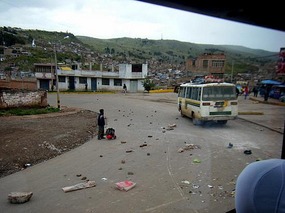
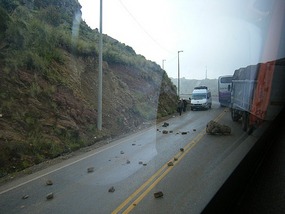
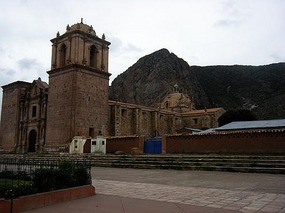
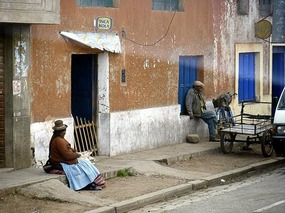
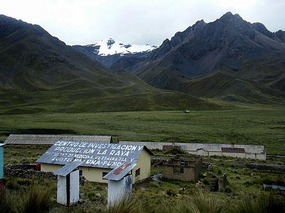
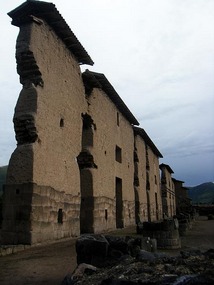
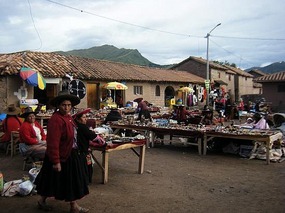
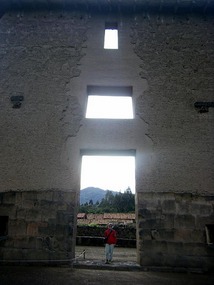
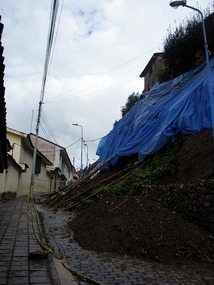
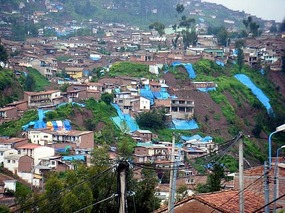
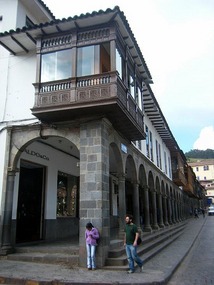
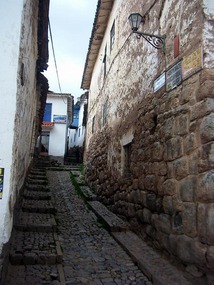

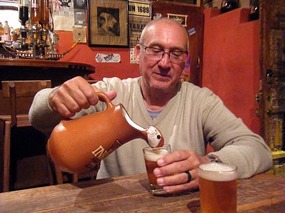





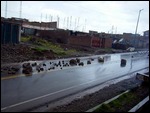
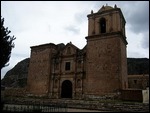
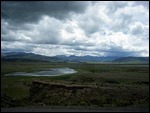
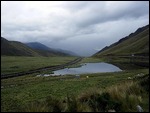
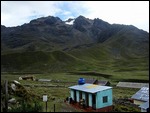
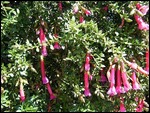
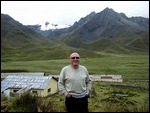

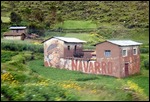
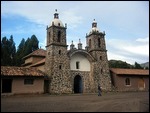
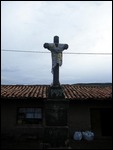
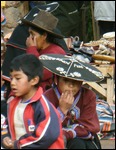

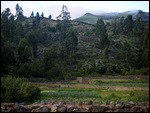
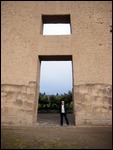
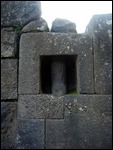

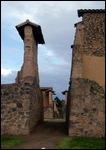
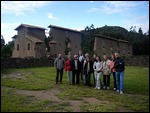


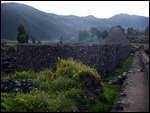

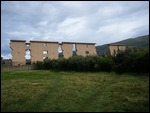
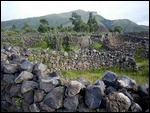
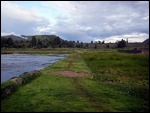
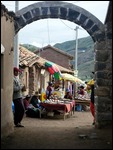
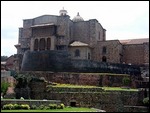
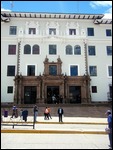
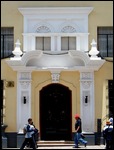

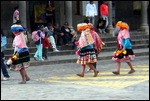



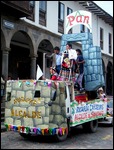

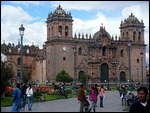
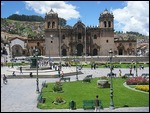
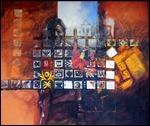
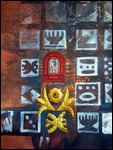

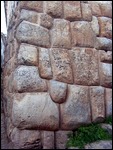
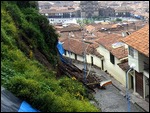
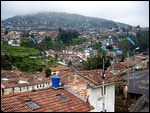
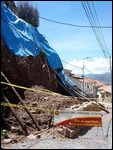



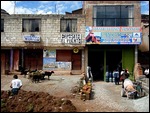

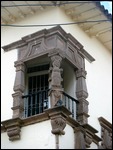
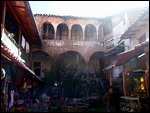


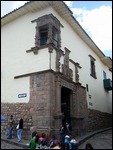
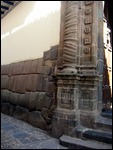
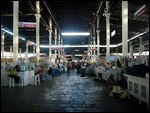
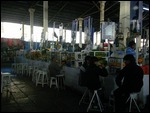
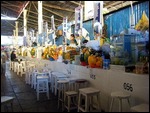
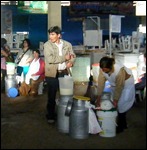

grindrodkaz
2010-03-22
Hey Cusco looks weird with all that blue plastic, we loved it in a bizarre way being hassled by kids trying to entice you into bars on a night - we would collect business cards from them and then throw them all into the air ... picking out one and then went into the bar rather than having a pied piper trail of kids following us through Cusco
jenandtony
2010-03-22
We enjoyed Cusco a lot but we think it may not be its usual self at present. There was a real dearth of tourists as nearly all the shorter package type tours have been cancelled. So there were mostly the skinflint backpackers like us around, not many pickings for the restaurant and bar touts, whatever their age!
It looks like there will need to be a lot of restoration work soon because so many of the earth slips are still unstable (and a good many are still blocking streets etc). We assume that the coming dry season will give them some opportunities; hopefully so because there were quite a few homes perched on the edge of big drops.